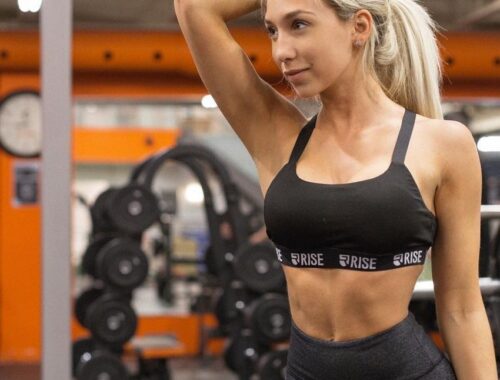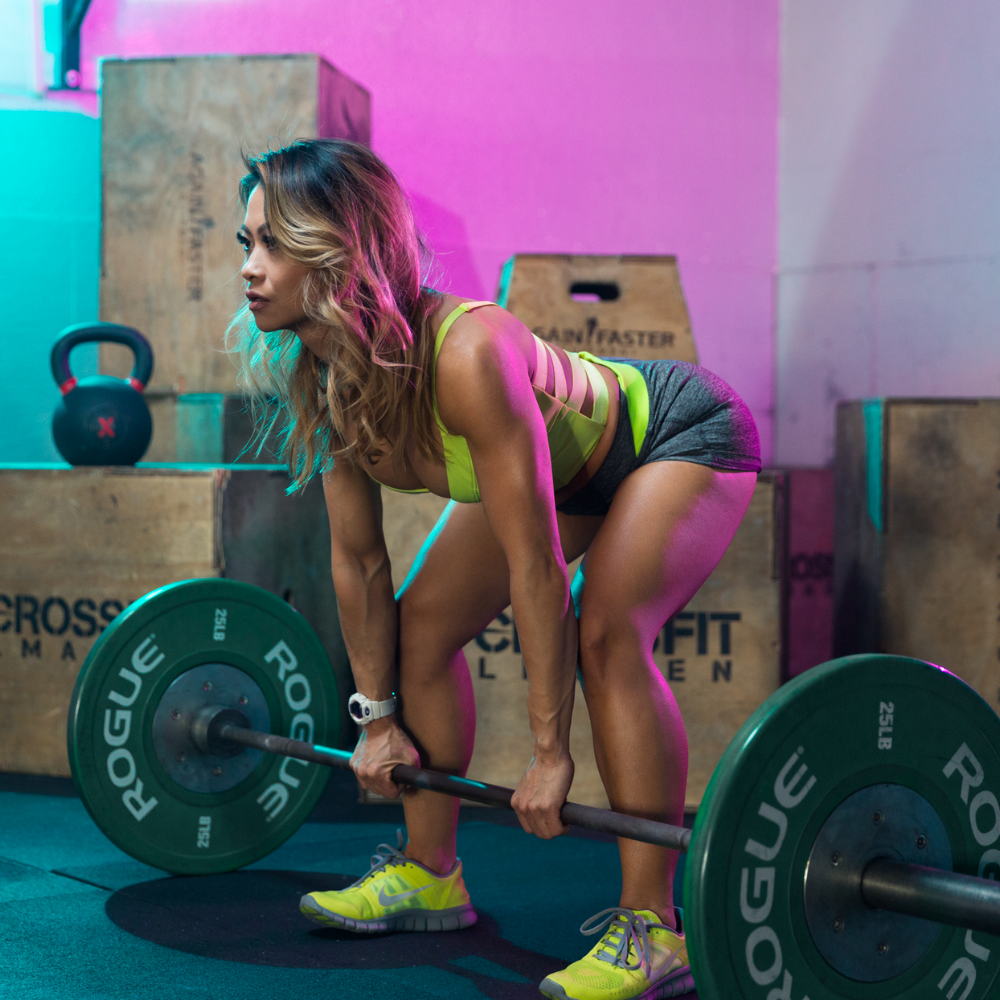
DEADLIFT – ULTIMATE PERFORMANCE TECHNIQUES
Contents
Strengthens the glutes, femorals and lower back with this effective composite movement.
Shape is very important for executing deadlift. Above all, be sure to maintain the natural curvature of the spine while lifting the weight.
EXECUTION OF THE DEADLIFT
* Place a bar on the bottom supports of a squatting cage or some other support.
* Load the bar with the appropriate weight and hold it with a prone grip (palms down). Stand upright holding the bar with both hands at shoulder width, with arms extended and the bar resting on the thighs.
* Contract the muscles of the lower back to maintain the curvature of the spine, then take a deep breath in and hold it while you bend the body by bending the hip while bending the knees.
* Carry the hips backward and lean the trunk forward while bending the knees and maintaining the natural position of the spine (the lower back slightly arched).
* Bend forward until the trunk is about 40 or 45 degrees. The exact position is determined by the ability to maintain the low back arched or, if you begin to bend the column, in the way to bend the knees or to lean to the front.
* After reaching the lowest position, maintain the position of the spine and stretch your legs. As the legs approach the complete extension, raise the trunk to the upright position. Bring your hips to the front as you go up and lean back.
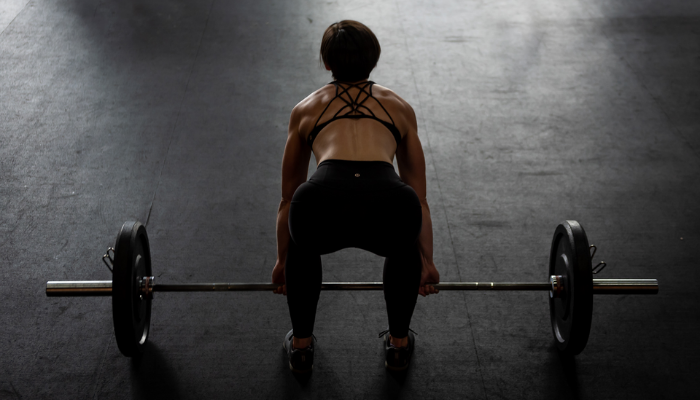
DEADLIFT TRAINING TIPS
* Extend your legs to start the movement. When they are almost extended, bring the hip forward to raise the torso.
* Keep your lower back arched throughout the exercise, since rounding off the back when lifting heavy weights in this exercise is the main cause of back injuries. Therefore, you should not bend or extend your spine during the exercise
* For maximum safety of the spine and optimal hip development, keep the trunk rigid during exercise
* To help maintain the posture of the spine, hold your breath during the descending and ascending phases, and also increase the strength of the muscles involved.
* Expel the air with strength when you overcome the most difficult part of the ascending phase to relieve the thoracic pressure.
* To put more emphasis on the glutes and femur, extend your legs completely when you lift your torso and throw it back. Do not stop shortly before reaching a fully upright position.
* Pull with the hip muscles and not with the arms when you lift the trunk and raise the shoulders and throw them back to maintain an effective curvature of the spine and help support the hanging bar.
* Isometrically contract the lower back muscles (spinal erectors) during the downward and upward phases of leg flexion and extension in order to support the pressure on the discs and vertebrae of the spine, realize that there can be thousands of pounds of pressure when using heavy weights!
* Flexibility in the hip joint is a prerequisite for effective deadlift. If you lack flexibility (and strength), do exercises such as good morning and gluteal, femoral and twin movements to gain both flexibility and strength in the muscles involved.
* To maximize the stress on your glutes and femur, also do deadweight with stiff legs, where your legs are kept straight, but not blocked.
MUSCLES INVOLVED IN DEADLIFT
In the deadlift, to produce the movement of the upper body, these muscles are involved: gluteus maximus, femorals and erectors of the spine.
* The gluteus maximus is a very fleshy muscle at the back of the hip. It is the muscle on which we sit and is the most powerful muscle at the beginning of the ascending phase when the hip is flexed to 90 degrees or less.
* As the trunk rises and the angle increases, the femorals take over the main role.
* In the upper part of the movement the spinal erectors come into play to fully extend the hip and spine. The spinal erectors are a group of long muscles located along the spine. Of all of them, the thoracic iliocostal is the most involved in the final degrees of hip extension due to its position from the pelvis to the six lower ribs.
The femoral muscle group is composed of three muscles: the biceps femoris, the semitendinosus and the semimembranous.
* The biceps femoris has two heads and is the largest of this group. It is located on the outside of the back of the thigh.
* The semitendinosus and semimembranosus are located on the internal side of the posterior face of the thigh and its muscular mass is much smaller than that of the biceps.
The quadriceps muscle group, located in the front of the thigh, is involved in knee extension.
It is formed by the vast lateral and the vast medial, whose muscle mass is located on both sides next to the knee joint and are commonly known as «teardrop muscles». It also activates the vastus intermedialis, whose mass is located higher in the center of the thigh, and the rectus femoris, which extends along the thigh, crosses the hip joint and acts on the hip and knee.
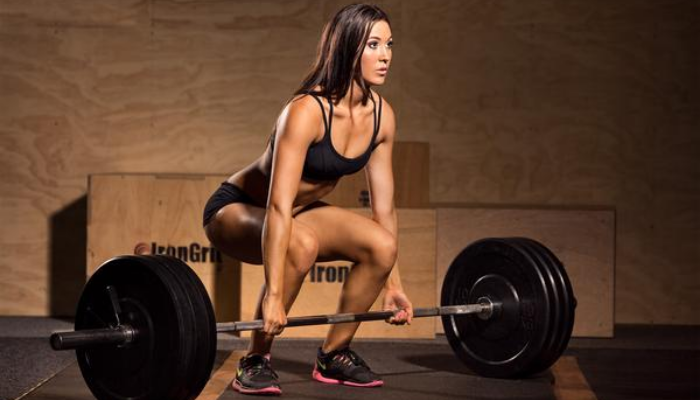
MUSCULAR AND ARTICULAR ACTION IN DEADLIFT
The hip is the extension where the trunk, pelvic girdle and upper body are raised and pulled back by this rotation. The trunk rises and is carried backward while the hips are advanced to acquire an upright posture. The gluteus maximus, femorals and thoracic iliocostal are responsible for these actions. The other spinal erector muscles of the lower back contract isometrically to stabilize the trunk and to maintain the curvature of the spine. There is also a static contraction of the rhomboid and mid trapezius to keep the shoulders and bar in position. The wrist (carporradial and carpoulnar flexors) and the flexor muscles of the fingers contract isometrically to maintain a strong grip. At the knee joint, the extension occurs in which the thigh moves away from the shin. All the muscles of the quadriceps play an active role.
DEADLIFT SPORTS APPLICATIONS
The extension of the hip and knee and the muscles involved are the most important in the action consisting of lifting the trunk, such as when lifting weights from the ground and especially when the weight has to be pushed from the knees or from the ground. This exercise is very important in powerlifting and clearing the bar in weightlifting. Bodybuilders use this exercise to develop and define the quadriceps, glutes, back of the thigh and lower back.
Hip and knee extension is a very important component in various forms of jumping and running, especially in sprints. More specifically, this action is necessary in sports that require high jumps such as basketball for shooting, catching rebounds and making caps, in volleyball for spikes and blocks, in high jumping in athletics and in sprints. In sprints, hip extension (known as stride) is basic to produce speed and propels the body forward when the foot contacts the ground. The extension of the knee makes the body lift off the ground. When it is done with a full stroke, deadlift is also a great exercise to improve posture.

SISSY SQUAT WITH MACHINE OR DISCS
También te puede interesar
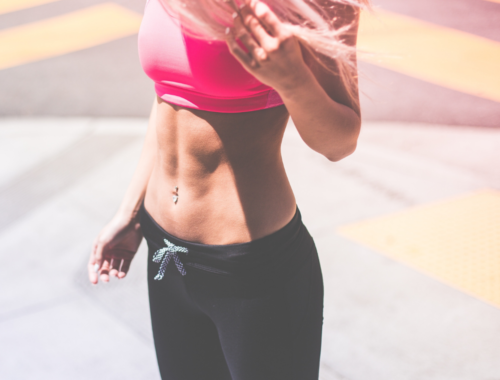
THE ULTIMATE WAY TO BURN CALORIES WITH CARDIO
diciembre 13, 2020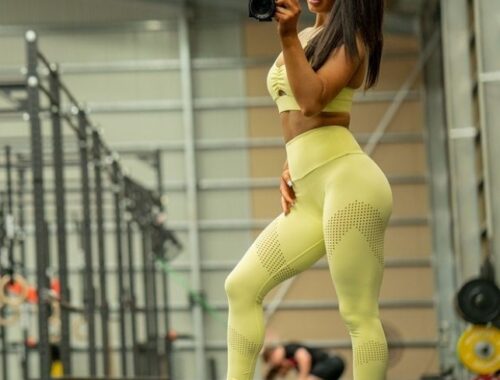
HOW TO TAKE PROTEIN?
enero 30, 2021